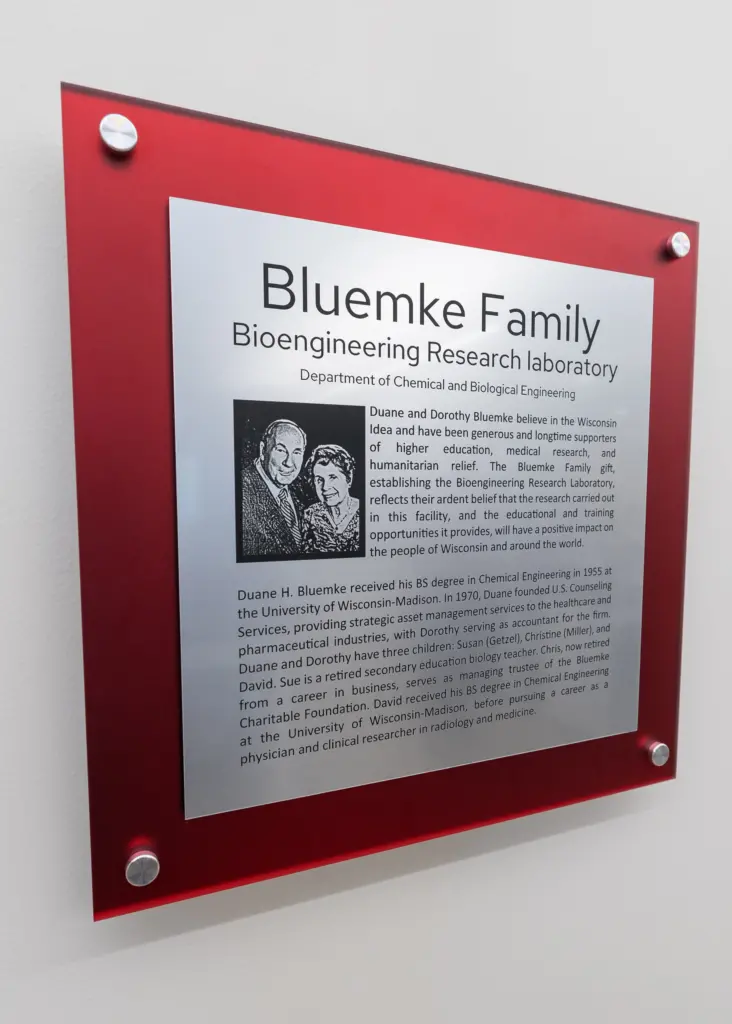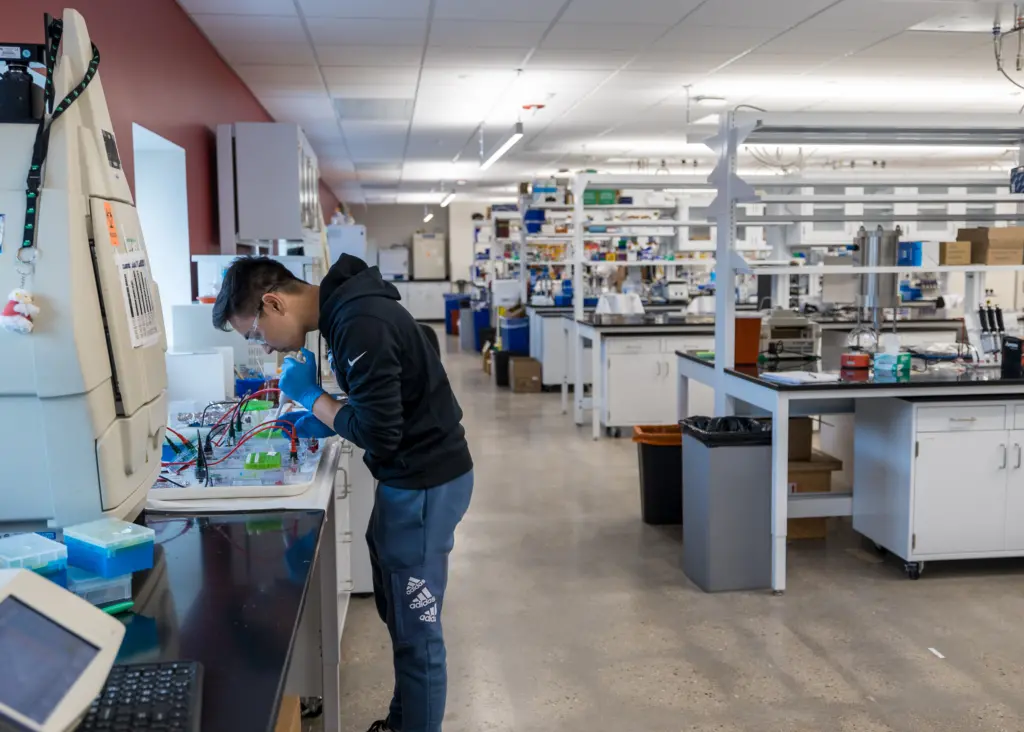The University of Wisconsin-Madison is known for its collaborative spirit, and few researchers on campus demonstrate that ethos more than the biological engineers in the Department of Chemical and Biological Engineering. The group constantly shares insights, ideas and equipment. Now, that collaborative spirit is getting a big boost through the Bluemke Family Bioengineering Laboratory, a 6,000-square-foot open-plan laboratory on the third floor of Engineering Hall that brings together five research groups into one space.
About a decade ago, as the biological engineering program at UW-Madison continued to grow, researchers realized their spaces in Engineering Hall were no longer ideal. Many of their labs were small and isolated from their colleagues. Sometimes students would have to carry sensitive experiments from one lab to another through public hallways. But the most frustrating part was that these segmented, closed-off spaces meant that the type of free-flowing conversations, collaborations and idea-sharing that can be so valuable in research were not taking place among labs, or even within research groups.
 The Bluemke family is excited to enable collaboration across biological engineering research groups. Credit: Joel Hallberg.
The Bluemke family is excited to enable collaboration across biological engineering research groups. Credit: Joel Hallberg.
“That really motivated us to think about what kind of space would address those issues and really be inviting to new faculty, graduate students and undergraduate researchers,” says Howard Curler Distinguished Professor and R. Byron Bird Department Chair Eric Shusta.
The new open-concept lab, which took almost two years to construct, currently houses four research groups, including Shusta’s, as well as those led by Milton J. and A. Maude Shoemaker Professor Sean Palecek, Karen and William Monfre Professor and Vilas Distinguished Achievement Professor Brian Pfleger and Assistant Professor Quentin Dudley. New Assistant Professor Mai Ngo will also use the space when she joins the department later in 2024.
The lab is designed to adapt as the department grows and needs evolve. There is enough space to house 45 researchers. All of the bench placements are movable and flexible, allowing for reconfiguration when necessary. It’s also designed to allow chemical, biological and radioactive hazards in the space, accommodating the wide breadth of research UW-Madison biological engineers undertake. The open concept encourages and facilitates shared equipment and resources across multiple research groups.
“When the concept was explained to me it was apparent there would be many advantages to a shared lab space,” says Duane Bluemke (BSChE ’55), a long-time supporter of the department along with his wife Dorothy and their children. “Accordingly, we decided it would be a very desirable project to support. Ultimately we expect there will be great benefits between different research groups working together to achieve maximum results.”
 The open, modular lab has space for 45 researchers and can be easily reconfigured as needs change. Credit: Joel Hallberg.
The open, modular lab has space for 45 researchers and can be easily reconfigured as needs change. Credit: Joel Hallberg.
Dudley, who joined the faculty in January 2024, says the upgraded lab space made an impression when he was recruited by CBE. “The new Bluemke Family Bioengineering Lab was one of the most compelling factors in my decision to locate to Madison,” he says. “The collaborative environment has helped my group get started more quickly and has enabled me to redirect my startup funds toward specialty equipment, since many of the basic molecular biology devices are already available within the shared lab space.”
Shusta says the last couple of months have served as a settling-in period for the researchers as they configure and adjust to the space. “Then, I think in the next phase we’re really going to see the impact of the open concept, where they can spend less time organizing and more time exploring what other groups are working on and helping out on experiments,” he says.
In fact, Shusta says he’s already seen the collaborative benefits of the space. Recently students in Pfleger’s lab taught some of his researchers how to build genetic constructs to do cell engineering, giving them a head start on their next research project.
Featured image caption: The new biolab has provided new CBE Assistant Professor Quentin Dudley and graduate student Sarah Noga the equipment and resources to quickly launch their research efforts. Credit: Joel Hallberg.